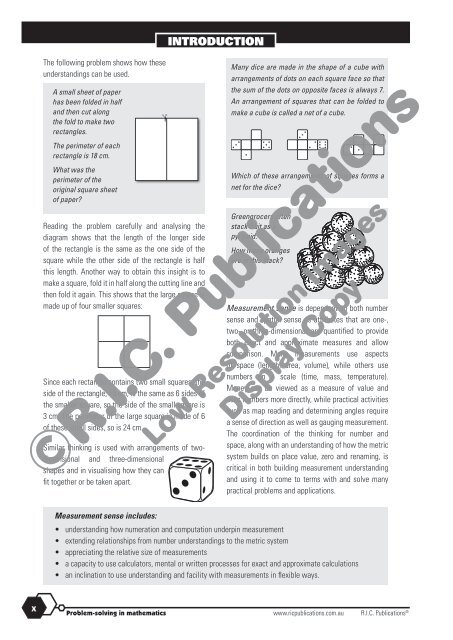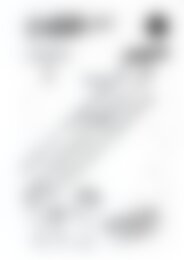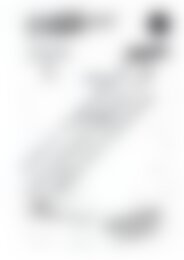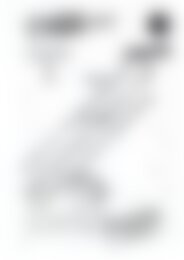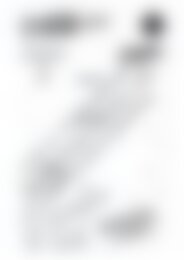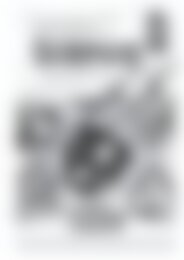20771_Problem_solving_Year_6_Background_information_resources
You also want an ePaper? Increase the reach of your titles
YUMPU automatically turns print PDFs into web optimized ePapers that Google loves.
INTRODUCTION<br />
The following problem shows how these<br />
understandings can be used.<br />
A small sheet of paper<br />
has been folded in half<br />
and then cut along<br />
the fold to make two<br />
rectangles.<br />
Many dice are made in the shape of a cube with<br />
arrangements of dots on each square face so that<br />
the sum of the dots on opposite faces is always 7.<br />
An arrangement of squares that can be folded to<br />
make a cube is called a net of a cube.<br />
The perimeter of each<br />
rectangle is 18 cm.<br />
What was the<br />
perimeter of the<br />
original square sheet<br />
of paper?<br />
Reading the problem carefully and analysing the<br />
diagram shows that the length of the longer side<br />
of the rectangle is the same as the one side of the<br />
square while the other side of the rectangle is half<br />
this length. Another way to obtain this insight is to<br />
make a square, fold it in half along the cutting line and<br />
then fold it again. This shows that the large square is<br />
made up of four smaller squares:<br />
Since each rectangle contains two small squares, the<br />
side of the rectangle, 18 cm, is the same as 6 sides of<br />
the smaller square, so the side of the small square is<br />
3 cm. The perimeter of the large square is made of 6<br />
of these small sides, so is 24 cm.<br />
Similar thinking is used with arrangements of twodimensional<br />
and three-dimensional<br />
shapes and in visualising how they can<br />
fit together or be taken apart.<br />
Which of these arrangements of squares forms a<br />
net for the dice?<br />
Greengrocers often<br />
stack fruit as a<br />
pyramid.<br />
How many oranges<br />
are in this stack?<br />
Measurement sense is dependent on both number<br />
sense and spatial sense as attributes that are one-,<br />
two- or three-dimensional are quantified to provide<br />
both exact and approximate measures and allow<br />
comparison. Many measurements use aspects<br />
of space (length, area, volume), while others use<br />
numbers on a scale (time, mass, temperature).<br />
Money can be viewed as a measure of value and<br />
uses numbers more directly, while practical activities<br />
such as map reading and determining angles require<br />
a sense of direction as well as gauging measurement.<br />
The coordination of the thinking for number and<br />
space, along with an understanding of how the metric<br />
system builds on place value, zero and renaming, is<br />
critical in both building measurement understanding<br />
and using it to come to terms with and solve many<br />
practical problems and applications.<br />
Measurement sense includes:<br />
• understanding how numeration and computation underpin measurement<br />
• extending relationships from number understandings to the metric system<br />
• appreciating the relative size of measurements<br />
• a capacity to use calculators, mental or written processes for exact and approximate calculations<br />
• an inclination to use understanding and facility with measurements in flexible ways.<br />
x<br />
<strong>Problem</strong>-<strong>solving</strong> in mathematics www.ricpublications.com.au R.I.C. Publications ®


